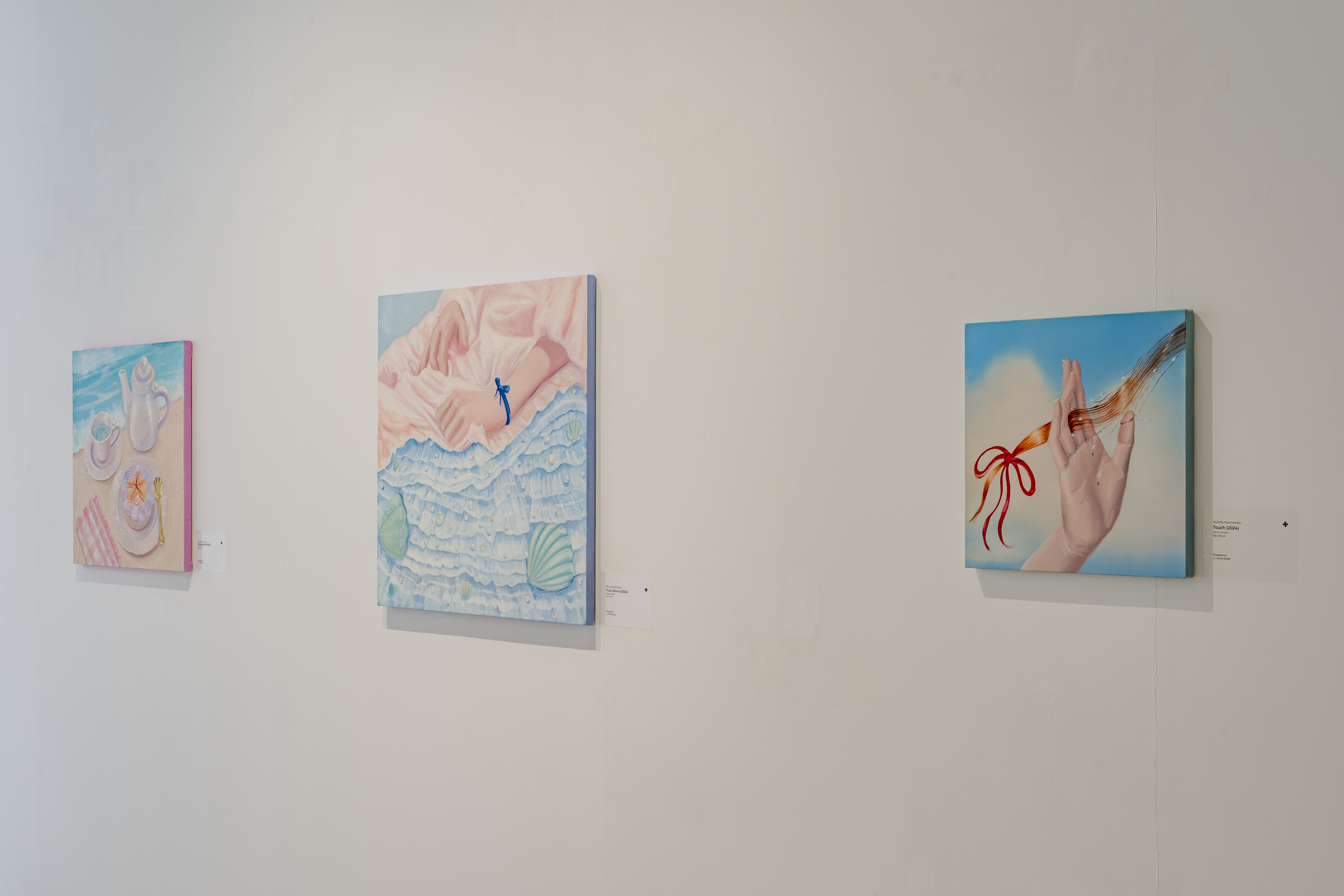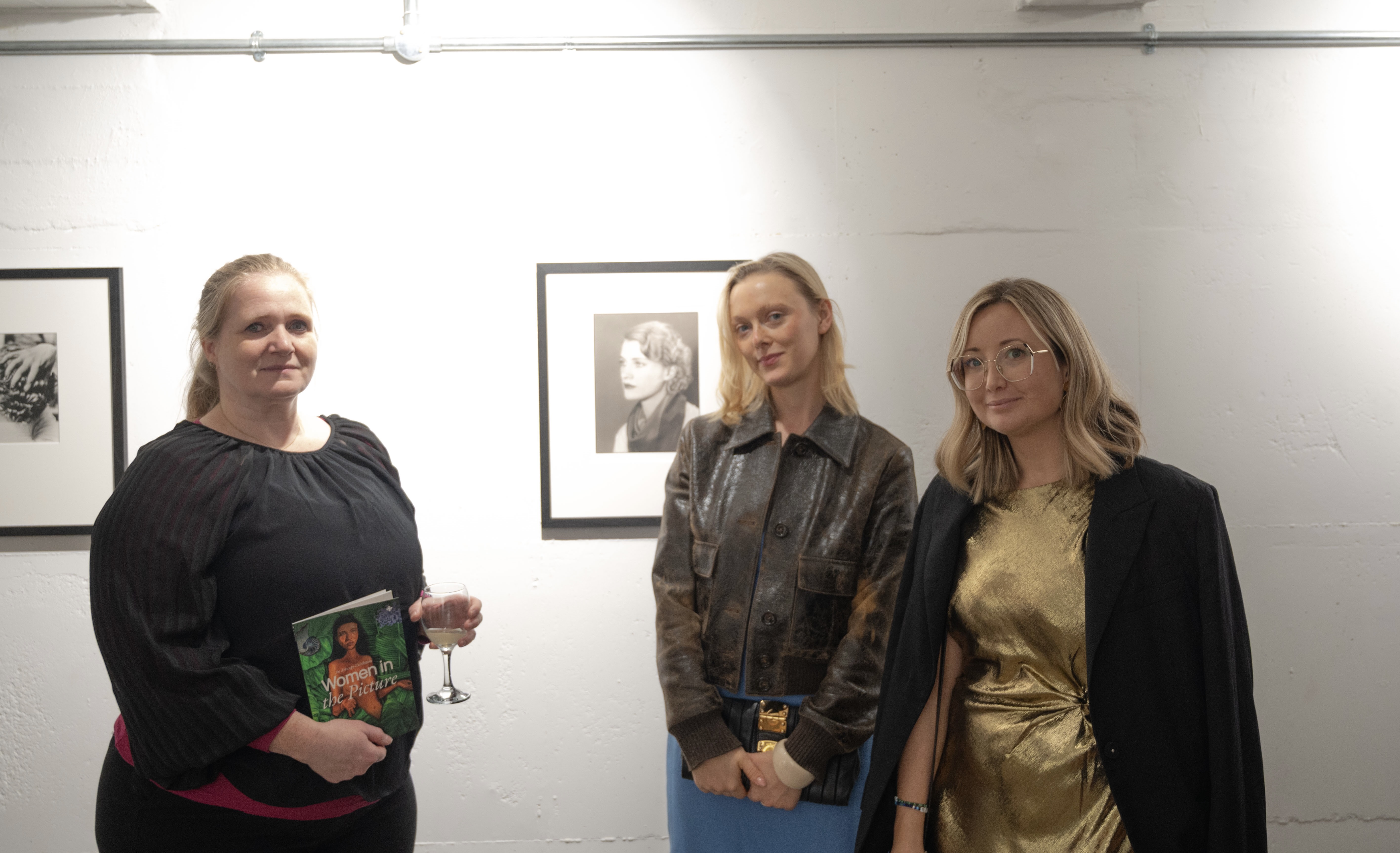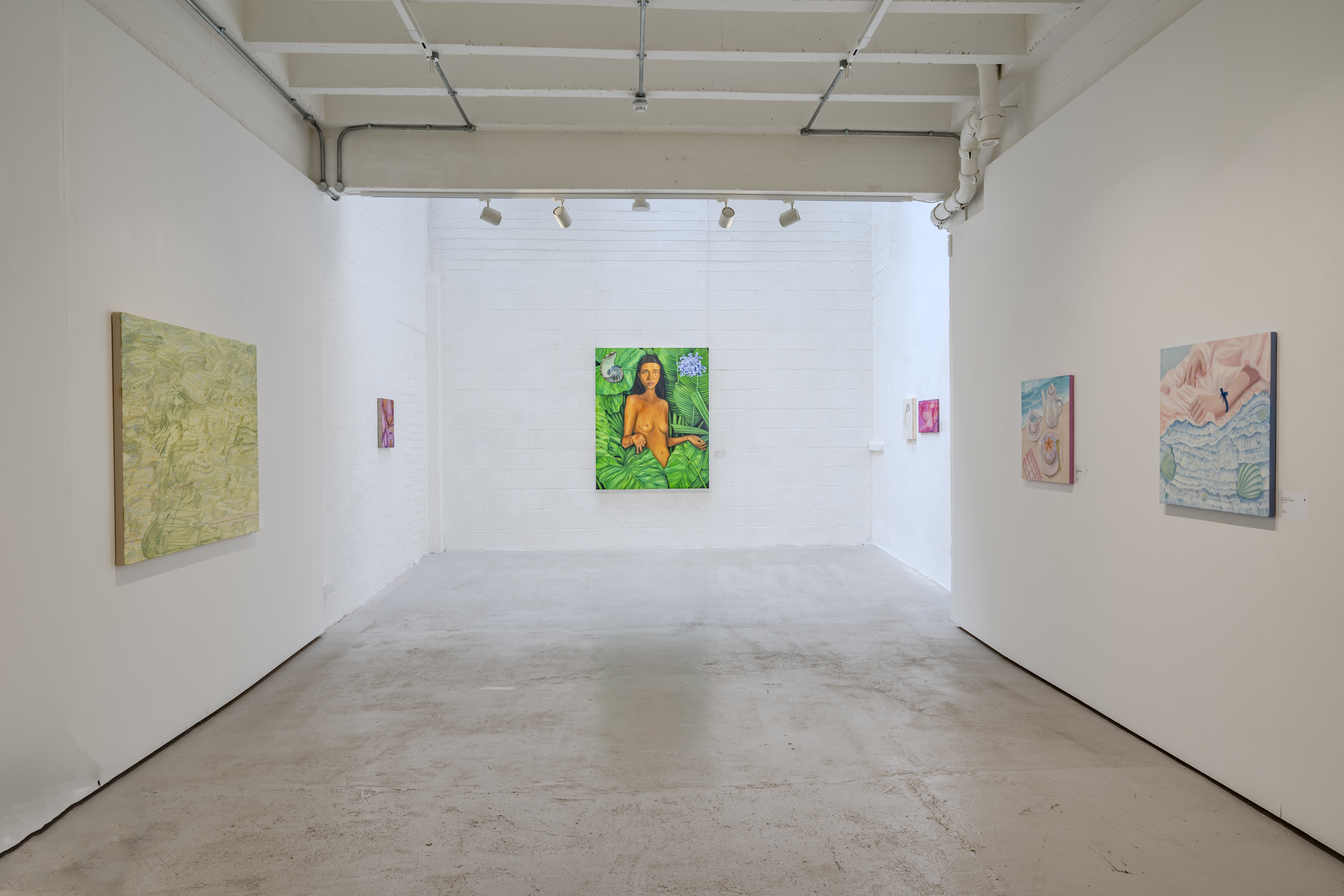Beyond the male gaze: Reframing the female body
“Woman” has been consistently evoked in Western art, while “women” themselves often escaped representation. From the 1970s onwards, however, the female body became a key subject for feminist art practices.Women artists began to reform female perspectives and experiences of life and the body within a tradition long dominated by the male gaze. As Laura Mulvey argued in 1975, this gaze cast women as passive subjects, defined by how they are looked at rather than how they see. Against this, feminist artists from Judy Chicago and Carolee Schneemann to Cindy Sherman, Tracey Emin, Jenny Saville, and Mickalene Thomas have reshaped representations of the female figure in Western contemporary art, challenging conventions of beauty and identity. Their work reclaimed the body as a site of agency, politics, and cultural meaning. The market value of female artists—particularly those working figuratively—has risen significantly, highlighting both the cultural and economic importance of collecting and supporting emerging women artists to ensure diverse voices shape the contemporary canon.
Women in the Picture gathered eight contemporary artists—Monika Marchewka, Konstantina Krikzoni, Ewa Juszkiewicz, Gal Schindler, Oriele Steiner, Stefania Tejada, and Lindsey Bull along with special photographic works by Lee Miller. Each artist interrogates how women are represented and perceived in varying modes. Their works explore embodiment, identity, and desire, and in doing so resist objectification, offering new ways of seeing women beyond inherited biases.
Oriele Steiner’s works Familiar Faces in Familiar Spaces, features a fractured composition where the body, face, and hair of the figure dart in triangular pockets amidst a verdant and hilly background. The green of the hills and trees contrast with the orange, luminous skin of the figure and the light pink, gauzy bloomers it wears. That Time of Day or The Desire, Despite It All layers surreal figuration with seeming influences from Cubism and Gauguin, but her work crucially repositions women as dominant, assertive presences. In They Were Never Satisfied, the central figure stands in a sheer shirt clutching wilted sunflowers, haunted by the looming hand of another presence. Across her practice, Steiner uses bold colour to stir emotional registers, staging figurative narratives that are at once playful and unsettling.

Installation photograph of Women in the Picture exhibition, courtesy of Monika Marchewka. Photo: © Giuseppe Intrieri
Monika Marchewka works with a similarly symbolic vocabulary, particularly in her recurring use of seashells. In True Colours, a seated figure’s layered skirts are adorned with pearls and shells, recalling the long history of shells as emblems of fertility, beauty, and wealth. From Aphrodite’s scallop shell in Greek mythology to Dutch vanitas paintings where shells evoked exotic luxury and transience, their symbolism is rich and enduring and women artists have often drawn on them as meaningful subjects. There is an undoubted sensuality in the shell, both in terms of their visual synonym with the female body and their ‘exotic origins’. In the late 18th century, Anne Vallayer-Coster incorporated shells into floral still lifes, while the Parminter cousins built entire shell-encrusted interiors, and Georgia O’Keeffe later used shells as vessels of abstraction and inner life. Across these examples, shells became more than natural forms—they offered women artists a way to explore creativity, identity, and new artistic possibilities. Marchewka’s works continue this tradition, her imagery layered with sensuality and allegory. Delicatessen is a vivid, dreamlike painting that presents a whimsical still life: a jaunty teapot hovers in the upper left beside a teacup brimming with glittering water. At the center, a cake adorned with seashells and an orange starfish rests on a pearly plate, accompanied by a gold, shell-shaped spoon. A pink-and-white gingham napkin anchors the lower corner, while the scene unfolds against a beach backdrop, the horizon lined with playful, pale-blue water. Her works often read like storyboards—unsurprising given her background in film—where objects and symbols unfold in cinematic sequences of color and mood. Touch is an ultra-feminine painting exemplifies her oeuvre. Against a creamy blue sky punctuated by a soft cloud, an elegant hand clasps a lock of red hair tied neatly with a ribbon. The composition is both intimate and symbolic, evoking tenderness and quiet theatricality.
Like Monika Marchewka, Gal Schindler turns to marine imagery, using the ocean and shells as metaphors for inner life, time, and the feminine. For Schindler, the ocean represents a symbolic space of possibility, a realm that embraces contradictions, connects deeply with nature, and serves as a privileged site of in-between states, infinity, and the feminine. The shell, for Schindler, symbolizes what lies within: the inner world of intimacy, solitude, introversion, and reflection. In Wild is the Wind, Gal Schindler paints a soft green scene where a kneeling figure gazes directly out at the viewer. Small flecks of pale blue, pink, and yellow pepper the canvas, while undulating layers of green create a sea-like background. Schindler is fascinated by the ocean, a mysterious world that harbors undiscovered species and places beyond human reach. Her small-scale painting A Deep Freeze depicts a female figure rendered in shades of blue against a stark white ground. Windswept hair and flushed cheeks animate the subject, and despite the apparent simplicity of the composition, the work conveys a rich, open-ended narrative.

Photo of artist, Gal Schindler (left) taken with her work during private view of Women in the Picture. Photo: © Max, YMX events
Stefania Tejada also incorporates shells, as in her lush paintings where female figures emerge from dense foliage. In God’s Dream, the upper body of a female nude figure emerges from rich and bright green foliage. A conch is pictured in the top left of the composition and a purple follower flanks the figure in the top right. The figure stares strongly and directly out at the viewer. Nature in her work fills the ‘mother’ role as well as acting as an exploration of self through wilderness and finding a sanctuary.
Ewa Juszkiewicz has a signature series of paintings which engage with the historical canon of portraiture. In Untitled (After Louise Élisabeth Vigée-Lebrun), she reworks Vigée-Lebrun’s famous Self-Portrait in a Straw Hat (1782), obscuring the sitter’s face with undulating masses of hair. Juszkiewicz replaces the subject’s likeness with concealment, confronting the cultural erasure of women and rewriting visual memory through delicate yet uncanny gestures. Lebrun was one of the most celebrated portraitists of her era, renowned for her refined depictions of European aristocracy and for asserting a prominent place for women painters in the 18th-century art world, an apt subject for Juszkiewicz’s exploration.
Konstantina Krikzoni’s painting Flower Sucker II presents a signature conflation of abstraction and figuration. This work explores the female form through vivid colour and delicate execution. Especially remarkable is the pale, washed effect of the purple background with the deep purple line work which perfectly executes the figure of the women. The fiery orange accents which undulate like coral formations add depth and nuance to this work.
Lindsey Bull’s psychologically charged portraits turn inward, depicting women in states of introspection and tension. Her portraits capture figures suspended between introversion and display—melancholic, elusive characters who simultaneously withdraw from the viewer’s gaze and assert individuality through eccentric dress, theatrical make-up, and bohemian self-fashioning. Babydoll shows a blond girl cloaked in a cascading pink dress set on a jagged background of navy, blue, and a white upper register. The figure does not gaze out at the viewer, and instead casts her glance down and to the left of the canvas. Hat depicts a portrait of a girl in a fedora with long hair which obscures part of her face- most notably her eyes which is a recurring motif in her works. The palette is unusual but somehow complementary; a dark green background frames the figure whose hair contains flecks of orange, blue, yellow, green applied in smooth, undulating strokes.

Photo of Director of Lee Miller Archives, Ami Bouhassane, with Jemma Elliot-Israelson and Daniela Bianco taken during private view of Women in the Picture. Photo: © Max, YMX events
Finally, the exhibition includes a special section of Lee Miller’s photography. These iconic portraits of artists such as Leonora Carrington and Leonor Fini, as well as Miller’s own self-portraits present women as both subjects and authors of their images. Miller’s practice behind and in front of the lens challenged gendered expectations in photography and art history, offering models of artistic agency long before second-wave feminism. Lee Miller began her career in the 1920s as a model in New York, sitting for photographers such as Edward Steichen and Arnold Genthe. Caroline Burke argues that as one of the most beautiful women of the 20th century, stating that her beauty was at war with her accomplishments. In 1929 she moved to Paris where first she assisted and later collaborated with Surrealist artist Man Ray. In his studio she was able to cultivate her technical skills in lighting, printing, and experimental image-making. She soon gained recognition for her portraits, fashion photography, and Surrealist-inspired compositions, such as this nude study in which the body is transformed into a modernist sculpture—fragmented, abstracted, and unsettling. Photography was embraced by the surrealists for its ability to create vivid images seemingly as apparitions- it was the ultimate tool to express the imagination.
Untitled [Nude back thought to be Noma Rathner] is an iconic image showing the back of a seated woman in black and white. Miller famously photographed herself and other women nude in ways that affirmed their power and beauty, presenting the body as a site of agency rather than sexualization. While her male contemporaries typically presented these types of works infused with overt eroticism, Miller used the camera to explore the strangeness of the human form without reducing it to sexual spectacle. Her reimagining of the nude as a subject of power rather than titillation set an important precedent, one that resonates strongly in the work of the painters in this exhibition, who continue to challenge inherited gazes and redefine the representation of women’s bodies. Like Miller, artists such as Oriele Steiner, Gal Schindler, Monika Marchewka, and Stefania Tejada employ surreal motifs, fractured bodies, and symbolic forms to reframe femininity and identity.
Corsetry was taken in 1942 for a British Vogue lingerie shoot. Miller used solarisation to elevate otherwise unremarkable undergarments, infusing them with style and dramatic intensity. She had first stumbled upon the “Sabatier effect” by accident in the early 1930s while working in the darkroom with Man Ray. What began as a technical mishap became, for the two artists, a source of creative innovation. Together, they refined the process into a distinctive technique—later named “solarisation” by Man Ray which Miller continued to use throughout her career across portraiture, still life, and fashion photography. Miller’s solarisation experiments resonate Konstantina Krikzoni’s fluid merging of figuration and abstraction, both use formal innovation to question how bodies are seen.

Installation photograph of Women in the Picture exhibition, courtesy of Lee Miller Archives. Photo: © Giuseppe Intrieri
In Coiffure, we see a cropped view of the back of a woman's head with tight curls. A manicured hand reaches back and meshes itself into the hair. The pose may have been intentionally arranged to highlight the subject’s elaborate manicure, yet the image transcends its initial purpose through the strength and mystery of its composition. It was included in Julien Levy’s exhibition International Photographers at the Brooklyn Museum, held from 8–31 March 1932.
The portraits of Leonora Carrington and Leonor Fini at St.Martin d'Ardeche, France 1939 are particularly special. Leonora Carrington (1917–2011) was a British-born Surrealist painter and writer whose fantastical, feminist-inflected imagery drew on myth, alchemy, and the unconscious, establishing her as one of the most original voices of twentieth-century art. Carrington forged close ties with the Surrealist movement in Paris in the late 1930s, developing a romantic and artistic partnership with Max Ernst and later joining circles of artists and writers in Mexico, where she became central to the Surrealist diaspora. St.Martin d'Ardeche, near Avignon where this photo was taken in their home from 1938. In this work, Carrington looks out at the viewer, her full body in the composition. Her hands reach gingerly into a wash basin creating an intimate portrait taken by an artistic contemporary and confidant. Miller’s artful yet documentary style became typical in subsequent years in her photographs documenting WWII. In those photos she employed the fragmentation of the surrealists to create a type of artistic framing in the images she took at concentration camps both confronting the viewer and controlling the level of horror presented. Similarly, Leonor Fini and Miller were in the same group of surrealists active in Paris in the 1930s. Fini (1907–1996) was an Argentine-born, Paris-based painter associated with Surrealism. She is renowned for her fantastical, often erotic imagery that placed powerful, androgynous women at the center of her richly imaginative worlds. Fini and Miller appear to have crossed paths on many occasions, in this case at Saint Martin d'Ardeche in 1938. Fini’s torso is shown with arms crossed leaning on a wall, her face and blouse are in sharp focus while the background blurs and recedes demonstrating Miller’s technical skills, especially in controlling and manipulating natural light. Fini’s downward gaze is pensive and relaxed, showing the intimacy between the sitter and the subject.
It could be said that there are an excess of images and portraits of Miller herself, mostly by other male artists. Her body, fragmented and whole has been captured ad infinitum by others.This makes her self portraits even more striking. In Self-portrait with headband from 1932, she sits amid a black background, her profile facing towards the left of the composition. The contours of the armchair are highlighted brilliantly, showing her technical prowess and ability to manipulate light highly effectively. The contour creates a bold, abstract form which mirrors the shape of her profile, also bright white. Her Self Portrait from 1930 is a more intimate, less intimidating image. The tight composition on her face, which looks out to the left, allows the viewer to study her calm and intense expression. The dark scarf draped around her neck creates beautiful abstract formations contrasted with her sharp profile and creamy complexion. Both Bull and Miller employ the motif of the profile turned to the left, a compositional strategy that withholds full access to the subject’s face. In Lindsey Bull’s portraits, obscured eyes and sideways glance creates an aura of introspection and distance, while in Miller’s self-portraits the stark play of contour and shadow transforms her profile into an abstract, almost sculptural form. Juszkiewicz’s work conceals the face entirely with the parted hair in an almost surrealist play of concealment. In each case, the partial view resists conventional portraiture, asserting control over how the female subject is seen.
Lee Miller is the blueprint for female artists representing themselves on their own terms. Her works subvert the male gaze from within, a quality that resonates powerfully with the younger painters in this exhibition. By drawing on Surrealist motifs and principles, these artists create imaginative spaces where the female body can be reimagined beyond the constraints of the male gaze—suggesting that the “surreal” functions as a kind of safe terrain for women to explore, fragment, and reconstruct their own image on their own terms. Taken together, these works highlight the resilience and creativity of women artists in reimagining how the female figure can be seen. Their works, much like Miller’s photographs, resist objectification and open up new imaginative possibilities for how women can be seen, remembered, and represented in art history. They confront the legacies of the male gaze while proposing new visual languages of power, vulnerability, and selfhood. In doing so, they expand the narratives of Western contemporary art and underscore the importance of supporting women artists whose voices continue to reshape the canon.

Installation photograph of Women in the Picture exhibition. Photo: © Giuseppe Intrieri
If you would like to attend future events, become an Artscapy member.
Bibliography
Bass, Marisa Anne, Anne Goldgar, Hanneke Grootenboer, and Claudia Swan. Conchophilia: Shells, Art, and Curiosity in Early Modern Europe. United Kingdom: Princeton University Press, 2023.
Burke, Carolyn. Lee Miller: A Life. United Kingdom: Knopf Doubleday Publishing Group, 2010.
Carrington, Leonora. Portrait of Max Ernst. c. 1939. National Galleries of Scotland. Accessed September 1, 2025. National Galleries of Scotland website.
Hilditch, Lynn. Lee Miller, Photography, Surrealism and the Second World War: From Vogue to Dachau. United Kingdom: Cambridge Scholars Publishing, 2018.
Miller, Lee. Coiffure. 1931. Photograph description on Lee Miller Archives website. Accessed September 2, 2025.
Corsetry, Solarised Photographs, Vogue Studio, London, England. 1942. Platinum palladium print, edition 10/30 + 1AP. Lee Miller Archives. Accessed September 1, 2025. Artsy website.
Nude Bent Forward, Paris. c. 1930. Art Institute of Chicago. Accessed September 1, 2025. Art Institute of Chicago website.
Mulvey, Laura. “Visual Pleasure and Narrative Cinema.” In Media and Cultural Studies: KeyWorks, edited by Meenakshi Gigi Durham and Douglas M. Kellner, 342–353. Malden, MA: Wiley-Blackwell, 2009.
Ooms, Saskia. “La photographie et le surréalisme au féminin : Cahun, Maar, Miller, Medková.” In Surréalisme au féminin ?, edited by Alix Agret, Dominique Païni, and Saskia Ooms, 117. Paris: In Fine éditions d’art / Musée de Montmartre, 2023.
Westley, Hannah. The Body as Medium and Metaphor. Netherlands: Rodopi, 2008.









